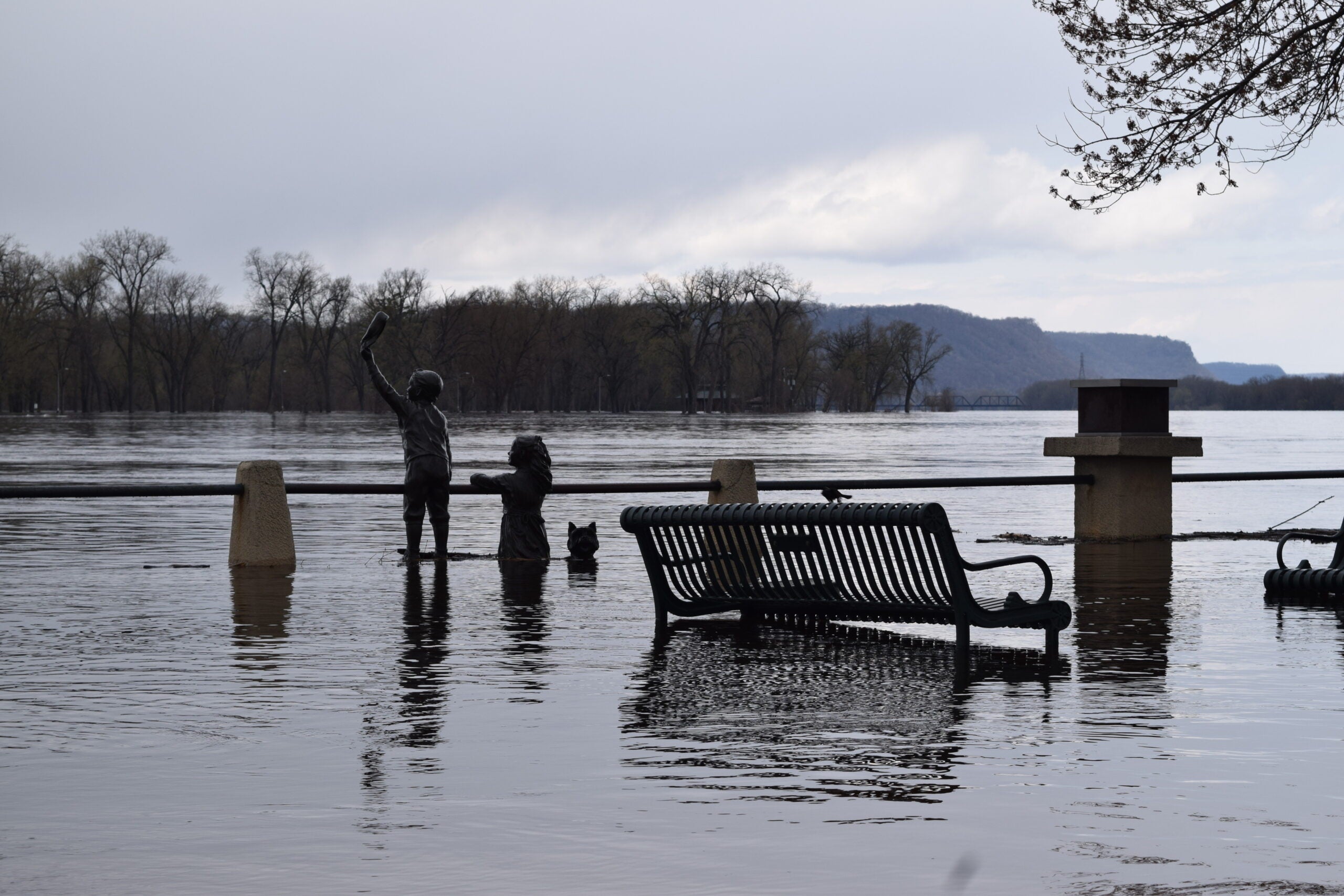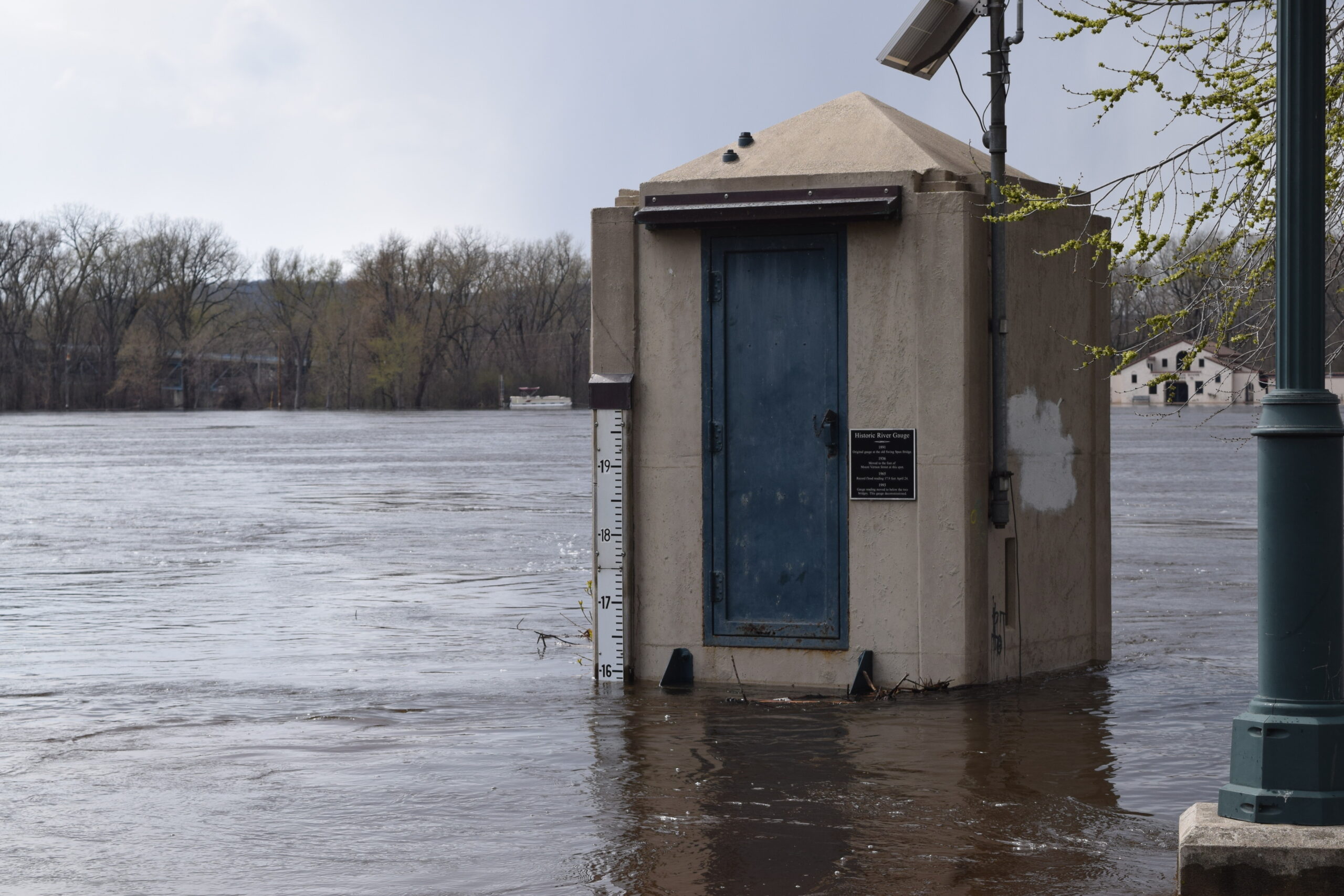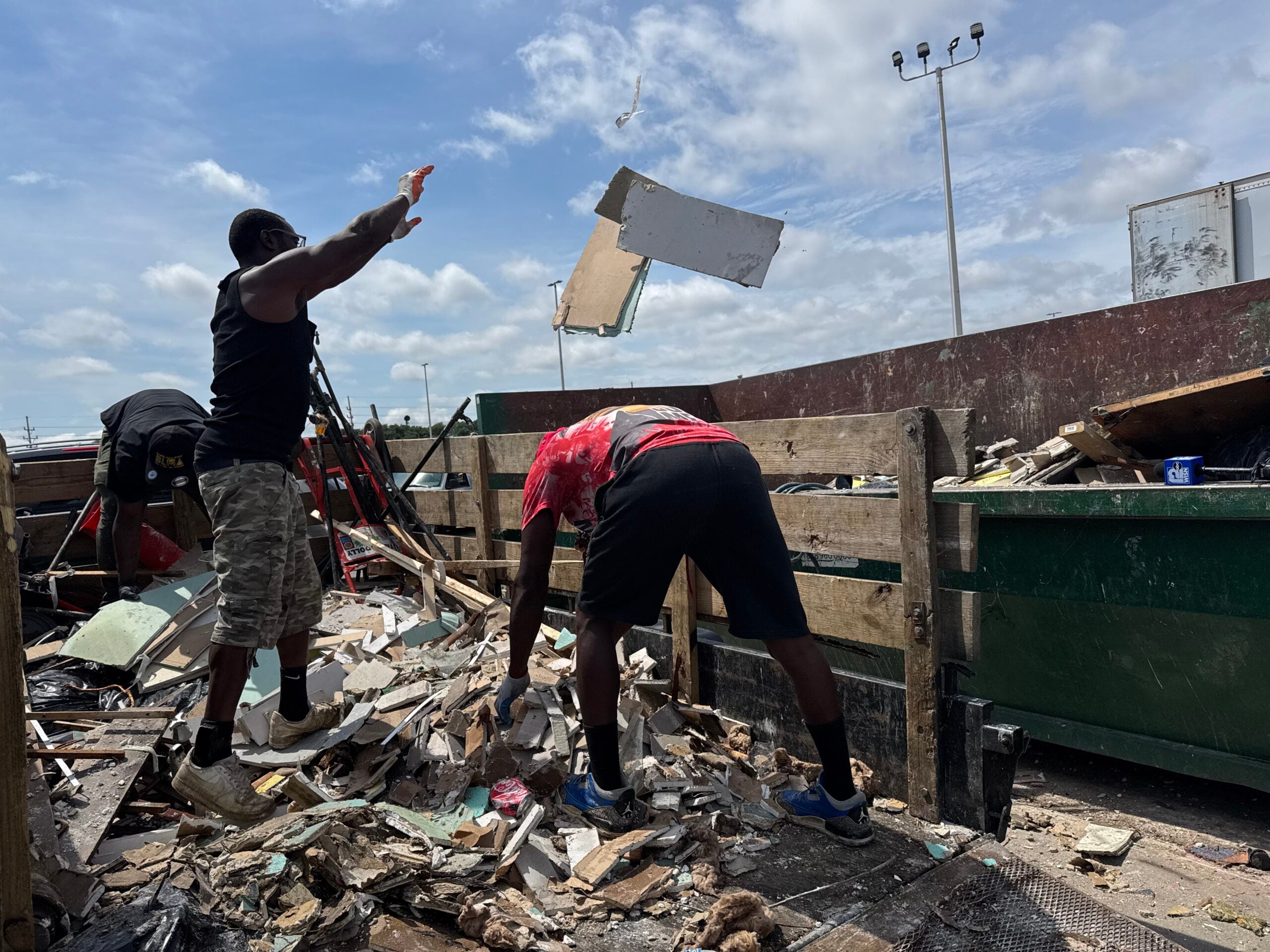Some Wisconsin cities are still recovering from near-record high levels of Mississippi River flooding last week as mayors look for ways to mitigate damage and become more flood-resilient.
In appearances on Wisconsin Public Radio’s “Central Time,” mayors in La Crosse, Fountain City and Prairie du Chien spoke about clean-up efforts and lessons learned from this year’s floods, which were largely driven by rapid snowmelt.
‘It could have been a lot worse’
News with a little more humanity
WPR’s “Wisconsin Today” newsletter keeps you connected to the state you love without feeling overwhelmed. No paywall. No agenda. No corporate filter.
Fountain City Mayor Gwen Katula said the flood was not as bad as those that hit the community in 2001.
“It could have been a lot worse,” she said. Katula added the city was more prepared, but said the downtown area felt the impact as businesses were forced to close and traffic detoured.
La Crosse Mayor Mitch Reynolds described similar problems, saying some homeowners are still dealing with basement flooding. The river rose to at least 15 feet in the area.
“We’re hoping that they’ll be able to recover some of those damages,” he said, adding it only reinforced the importance of investing in stormwater infrastructure and sustainable methods of floodwater storage, such as in marshes or creeks.
But Reynolds said the city has made infrastructure improvements that divert water to lower-lying areas.
“In our floodplain area on the north side of the city, we didn’t have some of the more significant water issues that we’ve had in the past. The biggest damage was to our parks — multiple parks were underwater,” he said.
South of La Crosse, the river crested to about 23.6 feet in the city of Prairie Du Chien, said Mayor Dave Hammer. That marks the third-highest flood level since record keeping began.

READ MORE: Mississippi River flooding crests in southwest Wisconsin
Anticipating more floods in the future, mayors look to become more flood-resilient
La Crosse Mayor Mitch Reynolds said the city is evaluating its levees that have controlled water flow since 1965.
“They’re in pretty good shape,” Reynolds said. “But we’re going to take another look at those and see if we can improve them to further insulate our community from future potential floods.”
Reynolds said that includes protecting areas outside the city along the Mississippi River, looking to find ways to store floodwaters and prevent “the devastating impacts to communities as we’ve seen in the past.”
“It’s billions of billions of dollars of damage in the last 20 years,” he said.
“When you have homes in a floodplain or when you have low-lying areas, just physically gotta lift them up,” he said. “That’s really what it comes down to, is they have to be higher than you anticipate the water is going to get. And that’s just a long-term process that involves a lot of property purchases and a lot of construction.”
Hammer of Prairie du Chien said it would be somewhat tough to build a flood wall because many own homes along the riverbank. Like Reynolds, he said officials are focused on ways to store floodwater and let it drain away naturally.
Katula said Fountain City’s geography limits some potential solutions.
“We are tucked against the bluffs — our community is on the bluff side, and it comes abruptly to the Mississippi River. And so moving stormwater and moving floodwaters is not in the cards for our municipality,” she said.
Still, there are some ordinances in place that can help, she said.
“If you are in the floodplain and you look to build, you get to build higher,” Katula said. “But that means for our existing businesses that are in the next floodplain and flood-fringe areas, there is no alleviation from the floodwaters other than to help sandbag and keep the waters away from the property.”
Wisconsin Public Radio, © Copyright 2026, Board of Regents of the University of Wisconsin System and Wisconsin Educational Communications Board.




